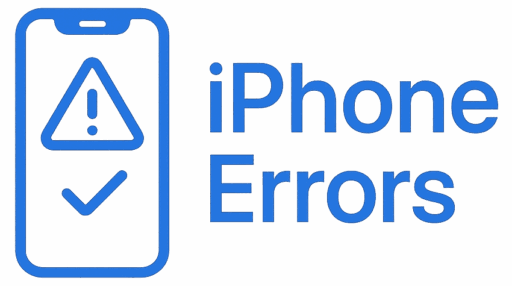For years, Apple enthusiasts have speculated about when the iPhone would finally fold. Rumors have swirled about prototypes tucked away in Cupertino’s labs, patents hinting at flexible screens, and whispers from Apple’s supply chain partners. Now, those whispers are getting louder—and they’re coming from one of Apple’s closest frenemies: Samsung.
According to new reports, Samsung Display is preparing to supply Apple with OLED panels designed for foldable devices. While Apple has kept silent, the industry is buzzing with the possibility that the first foldable iPhone could arrive in 2026. If true, this move could redefine the smartphone landscape, much like the original iPhone did back in 2007.
So, what exactly is going on between Apple and Samsung, and what does it mean for the future of the iPhone? Let’s break it down.
Samsung’s Role in Apple’s Foldable iPhone Plans
When it comes to OLED displays, Samsung Display is the global leader. The company supplies panels not only for its own Galaxy Z Fold and Z Flip series but also for Apple’s iPhones.
Now, insiders suggest that Samsung’s next-generation 8.6G OLED production lines are being optimized for foldable panels—and Apple is on the client list. This matters because these production lines promise:
- Larger sheets of OLED glass → More efficient cutting → Lower costs per display
- Improved durability → Less visible creases on foldable screens
- Better scalability → The capacity to meet Apple’s massive iPhone demand
If Apple is indeed moving forward with foldable plans, Samsung is the logical supplier. No other company has the same combination of scale, experience, and innovation in foldable OLED technology.
What This Means for Apple’s Timeline
So, when could we actually see a foldable iPhone?
According to multiple reports, Apple may launch its first foldable model around 2026, likely as part of the iPhone 18 lineup. However, don’t expect Apple to simply copy Samsung’s Galaxy Z Fold 6 or Flip 6. Apple tends to wait until the technology is polished—and then aims to redefine the category.
Some analysts even speculate that Apple could delay the standard iPhone 18 release to give the foldable version the spotlight. Apple has done this before with flagship features, creating space for innovation to stand out.
In short: Apple doesn’t want to be first—it wants to be best.
What Could the Foldable iPhone Look Like?
Right now, two main designs dominate the foldable market:
- Book-style foldables like the Samsung Galaxy Z Fold → open like a tablet
- Flip-style foldables like the Galaxy Z Flip → fold in half like a clamshell
Apple is rumored to be exploring both styles—and possibly even hybrid designs. Some patent filings suggest an outward-folding screen (which wraps around the device), while others hint at a clamshell flip for compact portability.
Key features we might see:
- Crease-reduction tech → Apple has reportedly filed patents on new hinge and display designs to minimize the crease issue.
- Metal plate hinge system → For better durability without adding too much bulk.
- Optimized iOS interface → iPadOS-inspired multitasking, but reimagined for a foldable iPhone.
The end result? A foldable iPhone that doesn’t just compete with Samsung—but sets a new benchmark for the industry.
The Supply Chain Advantage
One of Apple’s greatest strengths lies in its supply chain. And when it comes to foldable OLEDs, Samsung is the crown jewel.
Why Samsung?
- Proven leader in foldable OLED production
- Years of experience from Galaxy Z Fold and Flip series
- Capacity to scale production for Apple’s global demand
Where Do Others Fit In?
- LG Display is also rumored to be working on prototypes for Apple, but may focus on secondary supply or future refinements.
- BOE (China) has tried to break into Apple’s supply chain but has faced quality-control hurdles.
For now, Samsung looks like the key supplier. But Apple, being Apple, will likely diversify long-term to avoid over-reliance.
Challenges Apple Will Face
Even with Samsung’s support, launching a foldable iPhone won’t be easy. Here are the major hurdles:
1. Durability
Foldable phones are notoriously fragile. Screen creases, hinge failures, and long-term wear remain problems—even for Samsung’s latest models. Apple will need to push durability to new levels if it expects iPhone buyers (used to longevity) to adopt.
2. Cost
Foldables aren’t cheap. Samsung’s Galaxy Z Fold models retail around $1,800, and Apple is known for premium pricing. A foldable iPhone could easily push into the $2,000+ range. The question: will consumers pay?
3. Weight & Battery
Foldables tend to be heavier due to the extra screen and hinge mechanics. Add Apple’s push for strong battery life, and the balance becomes tricky.
Why Apple Is Taking Its Time
Some fans wonder: why hasn’t Apple jumped in sooner? The answer: strategy.
Apple has a history of waiting until the market matures before entering. Consider:
- MP3 players existed before the iPod—but the iPod redefined them.
- Smartphones existed before the iPhone—but the iPhone reshaped the industry.
- Smartwatches existed before the Apple Watch—but Apple made them mainstream.
The same could happen with foldables. Samsung and Google are paving the way, ironing out early flaws. Apple is quietly observing, prototyping, and preparing to release a foldable device when the tech is ready—and when it can offer something new.
Conclusion & Key Takeaways
The buzz around Apple’s first foldable iPhone just got louder—and Samsung might be the one fueling it. With reports pointing to Samsung Display supplying foldable OLED panels, the dream of a foldable iPhone is closer than ever.
- Timeline: Likely 2026 (iPhone 18 series)
- Design: Flip-style, book-style, or even hybrid
- Supplier: Samsung as the main OLED partner, with others in backup roles
- Challenges: Durability, cost, weight, and battery life
- Strategy: Apple will wait until foldables are polished, then aim to dominate
If history is any guide, when Apple finally enters the foldable market, it won’t just be another smartphone—it could redefine what an iPhone is.


Leave a Reply